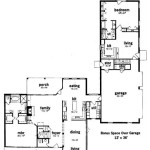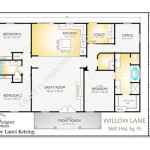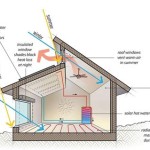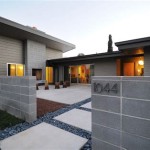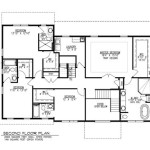Prairie Style House Plans are architectural blueprints that define the design and construction of houses inspired by the Prairie School architectural movement. These plans typically incorporate characteristic elements such as low-pitched, overhanging roofs, horizontal lines, bands of windows, and an emphasis on natural materials like wood and stone. One notable example of a Prairie Style house is Frank Lloyd Wright’s Robie House in Chicago, which exemplifies the movement’s principles of simplicity and harmony with the surrounding environment.
Prairie Style House Plans are sought after by homeowners and architects alike for their timeless elegance and functional design. Their open floor plans, natural lighting, and connection to the outdoors create a comfortable and inviting living space. The following sections will delve into the history, design principles, and benefits of Prairie Style House Plans, providing guidance for architects and homeowners seeking to incorporate this architectural style into their projects.
Prairie Style House Plans are characterized by several key design principles:
- Low-pitched roofs
- Overhanging eaves
- Horizontal lines
- Bands of windows
- Natural materials
- Open floor plans
- Connection to outdoors
- Simplicity and harmony
These elements combine to create a distinctive architectural style that is both aesthetically pleasing and functional.
Low-pitched roofs
Low-pitched roofs are a defining characteristic of Prairie Style House Plans. These roofs typically have a slope of less than 30 degrees, giving them a long, horizontal appearance. This design element serves several purposes:
- Integration with the landscape: Low-pitched roofs help the house blend in with its surroundings, echoing the flat lines of the prairie landscape. This creates a sense of harmony between the building and its environment.
- Emphasis on horizontality: The long, horizontal lines of the roof reinforce the Prairie Style’s emphasis on horizontality. This is further enhanced by the use of bands of windows and other horizontal elements in the design.
- Functional benefits: Low-pitched roofs can provide practical advantages as well. They allow for better drainage and can be more resistant to high winds. Additionally, they can accommodate solar panels more easily, promoting sustainability.
- Aesthetic appeal: The simple, understated lines of low-pitched roofs create a visually appealing aesthetic. They convey a sense of spaciousness and openness, while also adding a touch of rustic charm.
Overall, low-pitched roofs are an integral part of Prairie Style House Plans, contributing to their unique character and functionality.
Overhanging eaves
Overhanging eaves are another distinctive feature of Prairie Style House Plans. These eaves extend beyond the walls of the house, creating a sheltered outdoor space and adding visual interest to the building’s exterior.
Overhanging eaves serve several functional purposes:
- Protection from the elements: The eaves provide shade from the sun, rain, and snow, protecting the walls and windows from damage. This is especially important in regions with harsh weather conditions.
- Improved ventilation: The air gap created by the eaves allows for better air circulation, helping to keep the house cool in the summer and warm in the winter. This can reduce energy costs and improve indoor air quality.
- Architectural interest: Overhanging eaves add depth and character to the exterior of the house. They can be designed with decorative elements such as brackets or trim, further enhancing the visual appeal of the building.
In addition to their functional benefits, overhanging eaves also contribute to the Prairie Style’s emphasis on horizontality. The long, horizontal lines of the eaves reinforce the overall sense of spaciousness and openness that is characteristic of this architectural style.
Overall, overhanging eaves are an important element of Prairie Style House Plans, providing both functional and aesthetic benefits. They help to create a comfortable and inviting living space while also adding to the distinctive architectural character of the house.
Horizontal lines
Horizontal lines are a defining characteristic of Prairie Style House Plans. These lines are used extensively throughout the design, both inside and outside the house, to create a sense of spaciousness, openness, and harmony with the surrounding landscape.
- Emphasis on horizontality: Prairie Style House Plans emphasize horizontal lines to reinforce the sense of horizontality that is characteristic of the prairie landscape. This is achieved through various design elements such as low-pitched roofs, overhanging eaves, bands of windows, and horizontal siding.
- Integration with the landscape: The horizontal lines of the house help it to blend in with its surroundings, creating a sense of continuity between the building and the natural environment. This is especially important in Prairie Style homes, which are often situated on large, open lots.
- Spaciousness and openness: The use of horizontal lines creates a feeling of spaciousness and openness within the house. This is further enhanced by the use of open floor plans and large windows that allow for plenty of natural light.
- Simplicity and elegance: The horizontal lines of Prairie Style House Plans contribute to the overall sense of simplicity and elegance that is characteristic of this architectural style. The clean, uncluttered lines create a visually appealing aesthetic that is both timeless and modern.
Overall, horizontal lines are an essential element of Prairie Style House Plans, serving both functional and aesthetic purposes. They help to create a comfortable and inviting living space while also adding to the distinctive architectural character of the house.
Bands of windows
Bands of windows are a defining characteristic of Prairie Style House Plans. These horizontal bands of windows are typically placed low to the ground, allowing for ample natural light to enter the house while maintaining privacy. They also help to connect the interior of the house to the surrounding landscape.
There are several advantages to using bands of windows in Prairie Style House Plans:
- Natural light: Bands of windows allow for maximum natural light to enter the house, creating a bright and airy living space. This can reduce the need for artificial lighting, saving energy and improving the overall ambiance of the home.
- Connection to outdoors: The low placement of the windows provides a strong connection to the outdoors, allowing occupants to enjoy views of the surrounding landscape from inside the house. This connection to nature is a key element of Prairie Style design.
- Privacy: Despite the large amount of glass, bands of windows can provide privacy by being placed low to the ground. This allows for natural light to enter the house without compromising the privacy of the occupants.
- Architectural interest: Bands of windows add visual interest to the exterior of the house. They can be used to create a variety of patterns and effects, adding to the overall architectural character of the building.
In addition to their functional and aesthetic benefits, bands of windows also contribute to the Prairie Style’s emphasis on horizontality. The long, horizontal lines of the windows reinforce the sense of spaciousness and openness that is characteristic of this architectural style.
Overall, bands of windows are an essential element of Prairie Style House Plans, serving both functional and aesthetic purposes. They help to create a comfortable and inviting living space while also adding to the distinctive architectural character of the house.
Natural materials
Prairie Style House Plans emphasize the use of natural materials, such as wood, stone, and brick, to create a connection to the surrounding landscape and reflect the organic forms found in nature. These materials also provide durability and a sense of warmth and authenticity to the home.
- Wood: Wood is a primary material used in Prairie Style House Plans. It is used for siding, roofing, trim, and interior finishes. Wood’s natural beauty and warmth add to the inviting and comfortable ambiance of the home. Additionally, wood is a durable and sustainable material that can withstand the elements.
- Stone: Stone is another important material used in Prairie Style House Plans. It is often used for foundations, chimneys, and exterior accents. Stone’s strength and durability make it an ideal choice for these applications. Additionally, stone’s natural textures and colors add visual interest and a sense of permanence to the home.
- Brick: Brick is a versatile material that is also commonly used in Prairie Style House Plans. It can be used for exterior walls, chimneys, and interior fireplaces. Brick’s durability and fire resistance make it a practical choice for these applications. Additionally, brick’s warm colors and rich textures add character and a sense of to the home.
- Other natural materials: In addition to wood, stone, and brick, Prairie Style House Plans may also incorporate other natural materials such as glass, metal, and leather. These materials are used to create a harmonious and inviting living space that is both functional and beautiful.
Overall, the use of natural materials in Prairie Style House Plans creates a strong connection to the surrounding landscape and reflects the organic forms found in nature. These materials also provide durability and a sense of warmth and authenticity to the home.
Open floor plans
Open floor plans are a defining characteristic of Prairie Style House Plans. These plans emphasize the creation of large, open spaces that flow seamlessly from one room to the next. This open concept design creates a sense of spaciousness and openness, while also allowing for greater flexibility in how the space is used.
There are several advantages to using open floor plans in Prairie Style House Plans:
- Spaciousness and openness: Open floor plans create a feeling of spaciousness and openness within the house. This is further enhanced by the use of high ceilings and large windows that allow for plenty of natural light. The open concept design allows for easy movement and interaction between different areas of the house.
- Flexibility: Open floor plans offer greater flexibility in how the space is used. The lack of walls between different areas allows occupants to customize the space to their needs and preferences. For example, a dining area can be easily converted into a play area or a home office.
- Natural light: Open floor plans allow for maximum natural light to enter the house. This is achieved through the use of large windows and the absence of walls that would otherwise block the light. The natural light creates a bright and airy living space, reducing the need for artificial lighting.
- Connection to outdoors: Open floor plans often incorporate large windows and doors that lead to outdoor spaces, such as patios or decks. This creates a strong connection between the interior and exterior of the house, allowing occupants to enjoy the outdoors from within the comfort of their home.
Overall, open floor plans are an essential element of Prairie Style House Plans, serving both functional and aesthetic purposes. They help to create a comfortable and inviting living space while also adding to the distinctive architectural character of the house.
Connection to outdoors
Prairie Style House Plans emphasize a strong connection to the outdoors, creating a harmonious relationship between the interior and exterior spaces. This connection is achieved through the use of large windows, doors, and porches that seamlessly blend the indoor and outdoor environments.
Large windows are a defining feature of Prairie Style House Plans. These windows are typically placed low to the ground, allowing for ample natural light to enter the house while maintaining privacy. The windows also provide occupants with clear views of the surrounding landscape, bringing the outdoors into the home. Additionally, the use of corner windows creates a sense of continuity between the interior and exterior spaces, further enhancing the connection to nature.
Doors are another important element that contributes to the connection to outdoors in Prairie Style House Plans. These plans often incorporate large sliding glass doors or French doors that open up to patios, decks, or gardens. This seamless transition between the interior and exterior spaces allows occupants to easily move between the two areas, creating a more flexible and dynamic living environment. The use of porches is also a common feature in Prairie Style House Plans. These covered outdoor spaces provide a sheltered area for occupants to relax and enjoy the outdoors, while still being protected from the elements. Porches can be screened in to keep out insects, making them a comfortable and inviting space to spend time in during the summer months.
Overall, the connection to outdoors is a key characteristic of Prairie Style House Plans. This connection is achieved through the use of large windows, doors, and porches that seamlessly blend the interior and exterior spaces. This creates a harmonious relationship between the home and its surroundings, allowing occupants to enjoy the beauty of nature from within the comfort of their home.
Simplicity and harmony
Simplicity and harmony are fundamental principles that guide the design of Prairie Style House Plans. These plans strive to create a cohesive and balanced living environment that is both visually appealing and functional. Simplicity is achieved through the use of clean lines, uncluttered spaces, and a limited color palette. Harmony is achieved through the careful integration of the house with its surroundings and the use of natural materials and textures.
Prairie Style House Plans emphasize the beauty of simplicity. The exterior of the house is typically characterized by a simple, rectangular form with low-pitched roofs and overhanging eaves. The interior of the house is also designed with simplicity in mind, featuring open floor plans, built-in furniture, and a focus on natural light. This simplicity creates a sense of spaciousness and openness, while also reducing the need for unnecessary ornamentation or decoration.
Harmony is another key element of Prairie Style House Plans. These plans are designed to be in harmony with their surroundings, both in terms of their architectural style and their use of materials. The low-pitched roofs and horizontal lines of the house help it to blend in with the surrounding landscape, creating a sense of continuity between the building and its environment. Additionally, the use of natural materials such as wood, stone, and brick helps to create a warm and inviting atmosphere that is in harmony with the natural world.
Overall, simplicity and harmony are essential elements of Prairie Style House Plans. These principles guide the design of the house, from its exterior form to its interior spaces. The result is a cohesive and balanced living environment that is both visually appealing and functional.










Related Posts


